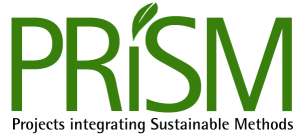The current state of our environment and its sustainability is very much at the forefront of the news these days. As a responsible global  society for our present and, more importantly, for our future, we must do more than publishing “strategies” on sustainability and plans to address industrial activities on the environment or start to build a green economy. We need to ensure that the sustainability of our environment, in a multitude of areas including reducing energy consumption, minimising electronic waste, recycling, re-using and developing a circular economy, is actively administered and not just remain as an ideology.
society for our present and, more importantly, for our future, we must do more than publishing “strategies” on sustainability and plans to address industrial activities on the environment or start to build a green economy. We need to ensure that the sustainability of our environment, in a multitude of areas including reducing energy consumption, minimising electronic waste, recycling, re-using and developing a circular economy, is actively administered and not just remain as an ideology.
It is increasingly evident that individuals and corporations are becoming more aware of the need to have a sustainability strategy in place, however, sadly, seem to be currently doing very little about actually acting on these strategies. There is already a mechanism for delivering business strategy, Project Management, and is the best mechanism for also delivering sustainability strategy along with business. There is a method and the tools to that, when incorporated with project management, enables the sustainability strategy to become a reality. And this is the GPM PRiSM (Projects integrating Sustainable Methods) method.
The organization indicates its commitment to addressing sustainability through the GPM Centre of Excellence by incorporating the method into its corporate culture along side its business strategy, as this and the sustainability strategy go hand in hand. Also committing to the project management team gaining the accreditation as GPMs.
A Project Manager who has attained the PM accreditation to become a Green Project Manager will have been instructed into the use of this method and the tools and how they integrate into project management methods such as the ISO 21500, PRINCE2® and Agile Project Management™. As such will be equipped to run projects, addressing the sustainability needs throughout.
The UN Global Compact’s Ten Principles for Sustainable Development, provide an important framework, and in partnership the Global Reporting Initiative Framework, (GRI G4), enables organizations of all types to start with a common point of publicly presenting their initiatives and status.
In conjunction with these are the ISO standards that also need to be addressed, such as ISO 14001 The Environmental Management Standard, ISO 26000 Guidance on Social Responsibility and ISO 50001 The Energy Management. ISO 9001 The Quality Management Standard also needs to be included and ultimately adhered to.
How will organizations be able to identify others with the same ideology? As more and more organizations take this direction, they are likely to restrict their partners to those who are showing that they are taking Sustainability and management of their environmental impact as seriously. The GPM Sustainable Centre of Excellence in Project Management is a distinction for organizations that have committed to environmental, social and economic stewardship through the use of green and sustainable project management practices.
PRiSM™ is the sustainability centered project delivery method,which incorporates tangible tools and methods to manage the balance between finite resources,social responsibility,and delivering “green”project outcomes.It was developed for organizations to integrate project processes with sustainability initiatives to achieve business objectives while decreasing negative environmental impact.
Governance and control for that change is effected through project management, using various formal methods such as PRINCE2® or Agile Project Framework/Management™, in-house developed methods or whatever the project manager(s) is/are experienced with. The issue is that these methods, as they stand, do not have tools or methods for analyzing
what the impact that the project delivery method, or what the project is actually delivering, will have on the environment and so address sustainability.
The P5 Standard provides the method and tools to analyse the organization’s strategy on sustainability and the goals of the project/programme in hand. These goals are then rated against the processes and products of the project, paying specific attention to the “triple bottom line” (John Elkington, in his book ‘Cannibals with Forks’ – 1997) as the Social, Environmental and Economical aspects, often known as People, Planet, Profit, incorporating the UN Global Compact and standards detailed earlier. With this toolkit the project manager will be equipped to deliver a project addressing and adhering to sustainability goals and strategies, which he/she does throughout the project.
How are we, as individuals, going to ensure that the sustainability strategies now in place will be acted on and become part of the organization’s culture, ideology, and not just words on a website or annual report, when delivering business change.
The project manager now has the opportunity to become certified as a Green Project Manager – Foundation level (GPM-b), by following a PRiSM based course. The next levels following the foundation are the Practitioner and Masters levels, which are competency based, (the foundation is examination based). As a certified GPM, the project manager will bring to an organization and shareholders the assurance that their projects will incorporate and address sustainability.
Today, projects are THE way for an organization to deliver business change, and Project Management is the profession employed to deliver these projects, by project managers, who therefore have a very important role to play when it comes to addressing sustainability of our environment.
Sustainability starts with Project Management.
Article by Antony della Porta who can be reached at antony.dellaporta@greenprojectmanagement.org
